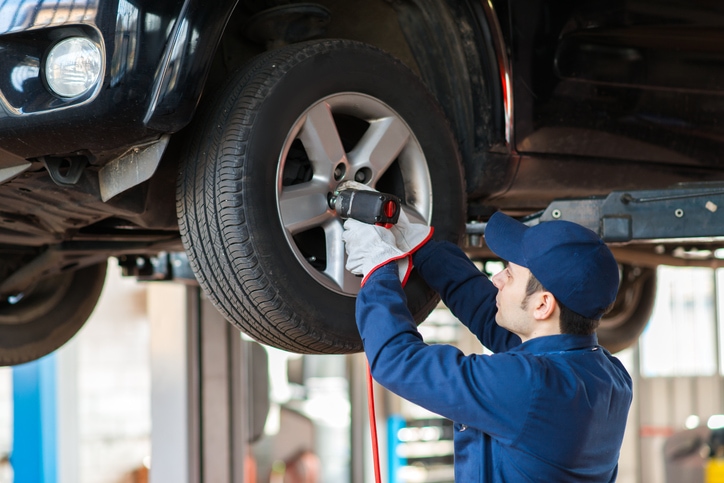All Categories
Featured
Your lorry's suspension system is a crucial element that enhances your driving experience by supplying stability, control, and comfort. Here's a detailed guide to keeping your suspension system in exceptional form.
![]()
Dripping Fluid: Oil around the shocks or struts suggests they might require substitute. Damaged Springs: Splits or breaks in the springs can create uneven car elevation. Corrosion or Rust: Metal components like control arms and bushings are at risk to deterioration in time. Have your suspension system evaluated by an expert mechanic. if you see any abnormalities.
Maintain tires blown up to the recommended pressure. Rotate tires every 5,000 to 7,500 miles. Equilibrium and align wheels annually or after hitting curbs or fractures. Irregular tire wear is a common indicator of suspension imbalance or worn parts.
![]()
Conclusion. Appropriate maintenance of your suspension system is critical for making sure a comfy and secure driving experience. By performing routine inspections, replacing worn parts, keeping tire treatment, and driving sensibly, you can keep your suspension in peak condition. Proactive care not only protects against expensive fixings yet likewise guarantees your vehicle's durability and security for every journey.
- Recognize the Relevance of the Shock Absorber. The shock absorber soaks up shocks from irregular roadways, supports the car's weight, and keeps the tires firmly touching the roadway. It consists of shocks, struts, springs, control arms, and bushings, every one of which work together to make sure a secure and smooth trip. Acknowledging its relevance is the initial step towards proper treatment.
- Conduct Normal Visual Inspections. Regular visual checks can help identify potential concerns early. Try To Find:

Dripping Fluid: Oil around the shocks or struts suggests they might require substitute. Damaged Springs: Splits or breaks in the springs can create uneven car elevation. Corrosion or Rust: Metal components like control arms and bushings are at risk to deterioration in time. Have your suspension system evaluated by an expert mechanic. if you see any abnormalities.
- Address Uncommon Noises and Symptoms. Uncommon sounds, such as creaking, squealing, or clunking, typically signal suspension issues. A bouncy experience, difficulty steering, or the lorry pulling to one side suggests that a suspension element could require interest. Do not disregard these indications; early detection can stop further damage.
- Preserve Appropriate Tire Care. Tires and suspension collaborate to provide a smooth experience. To reduce tension on your shock absorber:
Maintain tires blown up to the recommended pressure. Rotate tires every 5,000 to 7,500 miles. Equilibrium and align wheels annually or after hitting curbs or fractures. Irregular tire wear is a common indicator of suspension imbalance or worn parts.
- Change Worn-Out Parts on Time. Suspension parts like shocks, shows off, and bushings wear gradually. Producers usually advise replacing shocks and shows off every 50,000 to 100,000 miles, depending on driving problems. Delaying replacement can endanger handling, security, and total car performance.
- Avoid Overloading Your Automobile. Surpassing your vehicle's weight ability puts extreme stress on the shock absorber. This can bring about faster tear and put on on elements like springs and shocks. Always examine your proprietor's manual for weight limits and stay clear of overloading.
- Drive Sensibly. Aggressive driving habits, such as speeding up over gaps, taking corners too fast, or frequently driving on rough roadways, can damage your suspension. Method cautious driving to minimize wear and expand the life expectancy of your shock absorber.
- Set Up Expert Assessments. Regular professional assessments are essential for recognizing concealed problems and making sure optimal performance. Technicians can identify troubles that aren't noticeable during a do it yourself check, such as worn sphere joints or control arm damage.
Conclusion. Appropriate maintenance of your suspension system is critical for making sure a comfy and secure driving experience. By performing routine inspections, replacing worn parts, keeping tire treatment, and driving sensibly, you can keep your suspension in peak condition. Proactive care not only protects against expensive fixings yet likewise guarantees your vehicle's durability and security for every journey.
Latest Posts
Boost Your Home with Montana Fence Products
Published Apr 22, 25
1 min read
Unlock Great Deals with Montclare Auto Repair Service Promotions - Available for a Short Time!
Published Apr 22, 25
2 min read
Professional Car Repair Services at Montclare Auto Repair - Don’t Wait, Act Now!
Published Apr 22, 25
2 min read
More
Latest Posts
Boost Your Home with Montana Fence Products
Published Apr 22, 25
1 min read
Unlock Great Deals with Montclare Auto Repair Service Promotions - Available for a Short Time!
Published Apr 22, 25
2 min read
Professional Car Repair Services at Montclare Auto Repair - Don’t Wait, Act Now!
Published Apr 22, 25
2 min read